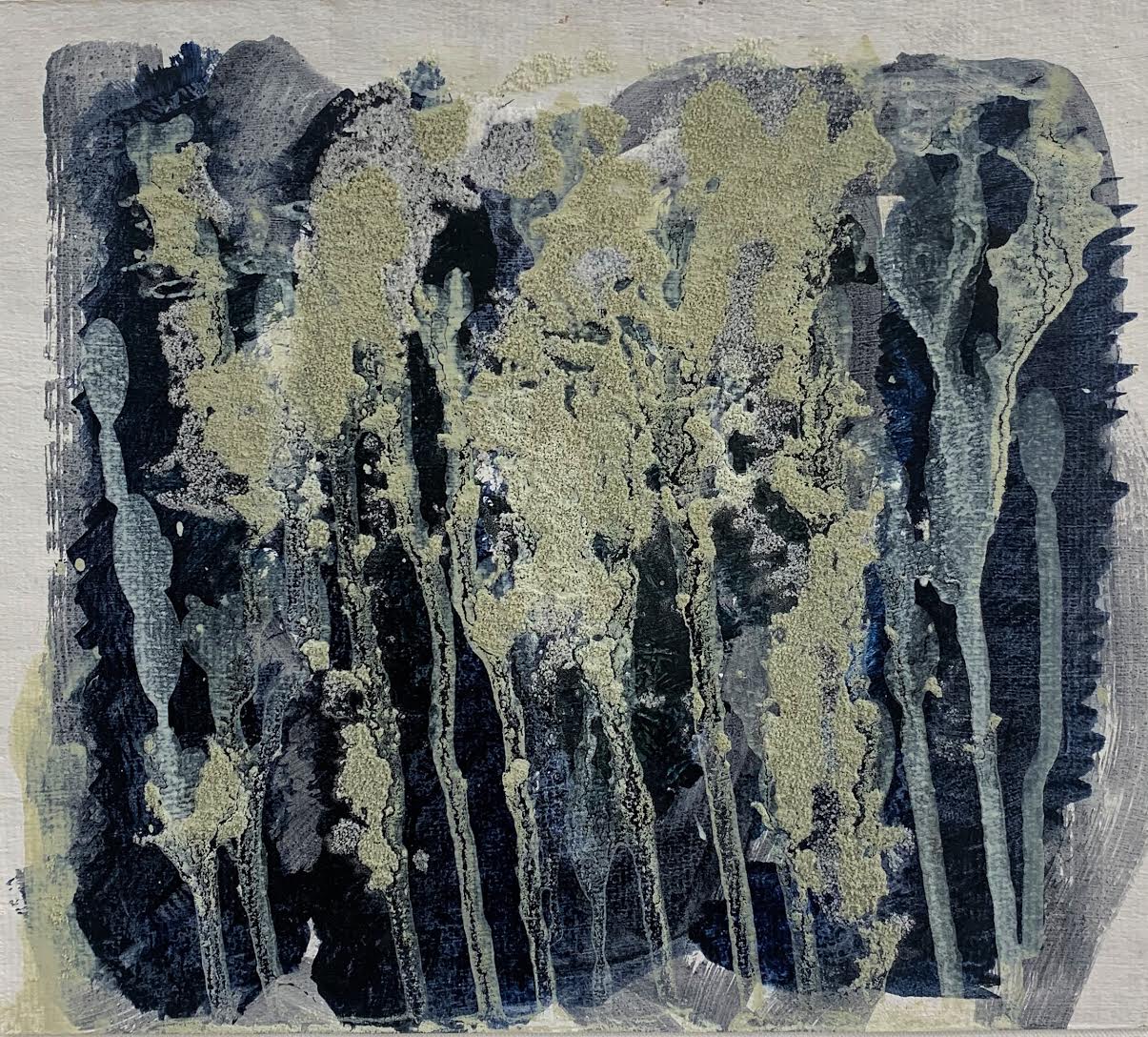14 April to 31 July 2021
Lisa Keiko Kirton, Jonathan Meuli, Isao Miura, Nana Shiomi, Hakan Topal, Shizuka Tatsuno
Japan Water features artists who have been thinking for a long time about the effects of water in Japan. The purity of water is essential for so much of Japanese culture, from food through to paper-making. And yet water is an increasingly endangered resource. Here we have images and ideas about its glass-like reflections , its clear rippling rhythms, its torrential, potentially dangerous power and its health-giving properties. There is much to be concerned about, much to celebrate and much we can learn from.
The artists
Four of the artists, Isao Miura, Lisa Keiko Kirton and Nana Shiomi are of Japanese origin, and are now living in London. Shizuka Tatsuno is a designer, trained in the UK, but now in practice in Tokyo. Hakan Topal is Turkish, living in New York, and has conducted two residencies in Japan to look at the effects of the Tsunamis. Jonathan Meuli is a British painter living in Glasgow. However, Japanese art has profoundly influenced him, causing him to consider the consequences of increasing water-flows around the world.
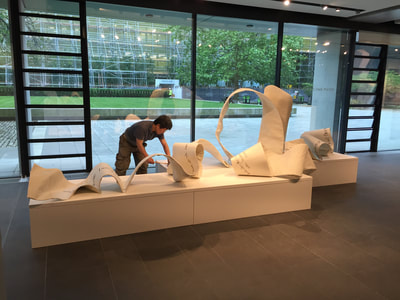
Japan-UK season of culture
The exhibition coincides with the postponed Japanese-UK season of culture. This was originally timed to culminate in the Olympic and Paralympic Games, now to be held in Tokyo in 2021.
Water under threat
Everywhere in the world, the quality of water is under threat and nowhere more so than in Japan, where the 2011 earthquake and tsunami led to Fukushima Nuclear Power Plant leaking radioactive material into the sea. Acid rain has polluted rice farms and forests on the north west coast of Honshu, Japan’s main island, since the 1970s. This got world-wide media attention. It was shocking – and it led to repercussions which are still emerging. In Japan the effects have been especially disruptive and deep-seated.
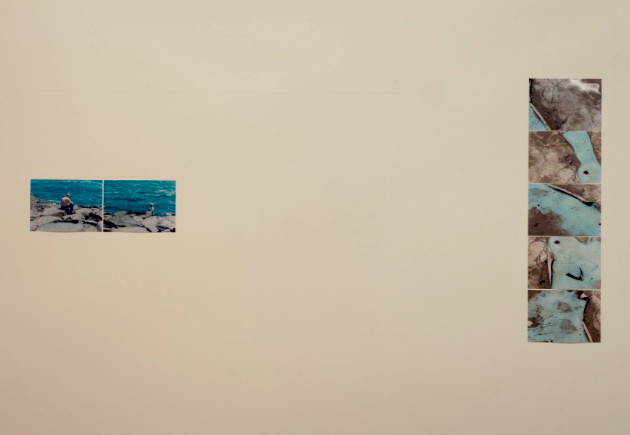
The significance of water in Japanese art and culture
Japan is a country of mountains, snow, and rivers. Waterfalls are symbols of purity, but also pose something of a test. Stand in a small cave behind a waterfall and try to meditate above the roar of the water.
Stand anywhere in our busy world and try to concentrate on what is happening to our environment, so important but often lost in the daily babble.
The artists in Japan Water take us on a journey into the significance of water in Japanese art and culture, its importance for Japan’s economy and indeed its survival. Tea, sake, rice, fish, handmade paper, hot baths: so many keystones of the Japanese way of life depend on clean water. No wonder the most famous haiku ever written is about a frog jumping into an old pond!
Furu ikeya / An old pond
kawazu tobikomu / a frog jumps in
mizu no oto / the sound of water
From woodblock prints to video to bronze to stoneware
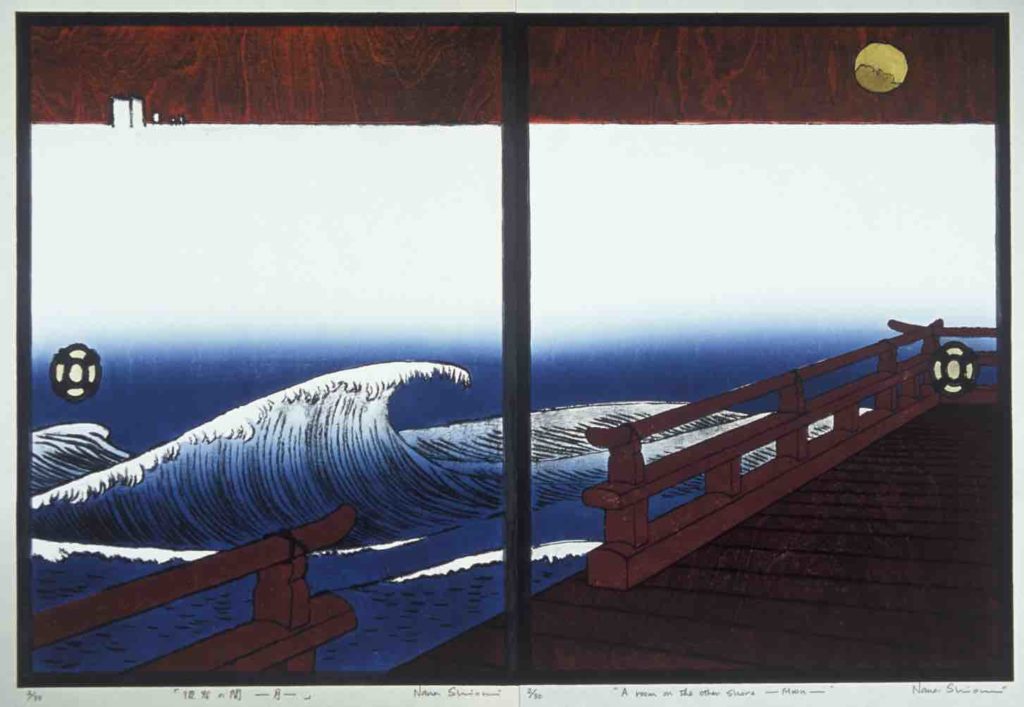
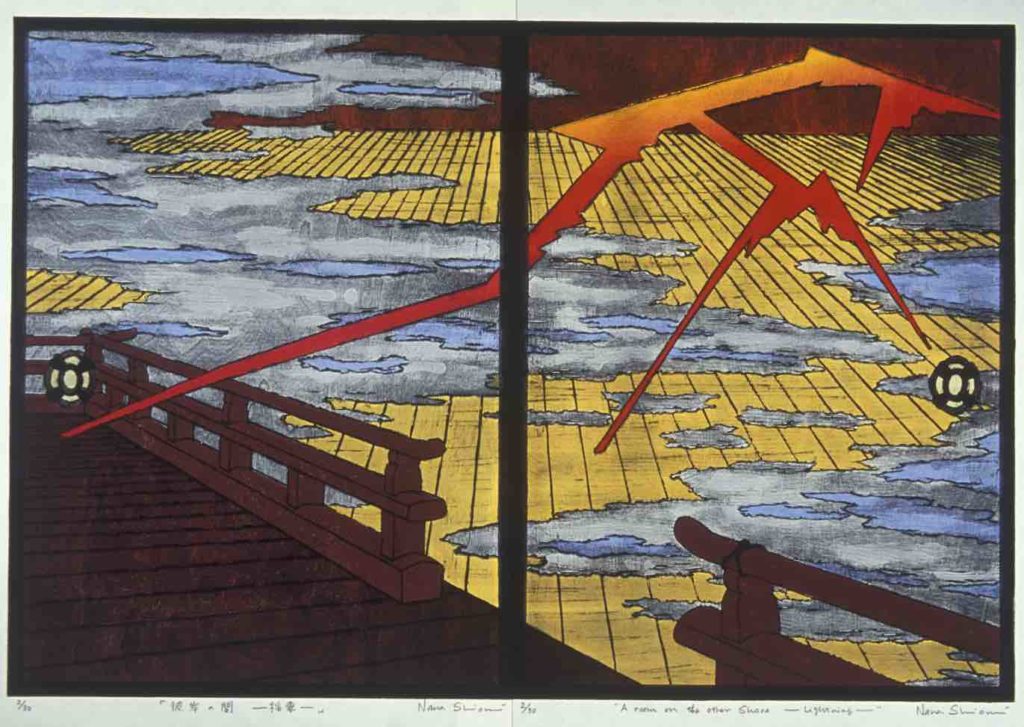
Japan Water includes traditional water-based woodblock prints re-interpreting Japanese tropes of architecture and nature. There are oil paintings exploring the scientific power and beauty of the waves which surround Japan and the rich muddy water which warms its rice paddies. Other paintings riff on Japanese calligraphy. A bronze teardrop is born out of a haiku. Some of the content is poetic, in a Japanese tradition of art which is lyrical and reflective. However the exhibition covers a range from poetic to political to practical, as befits this complex country of contrasts.
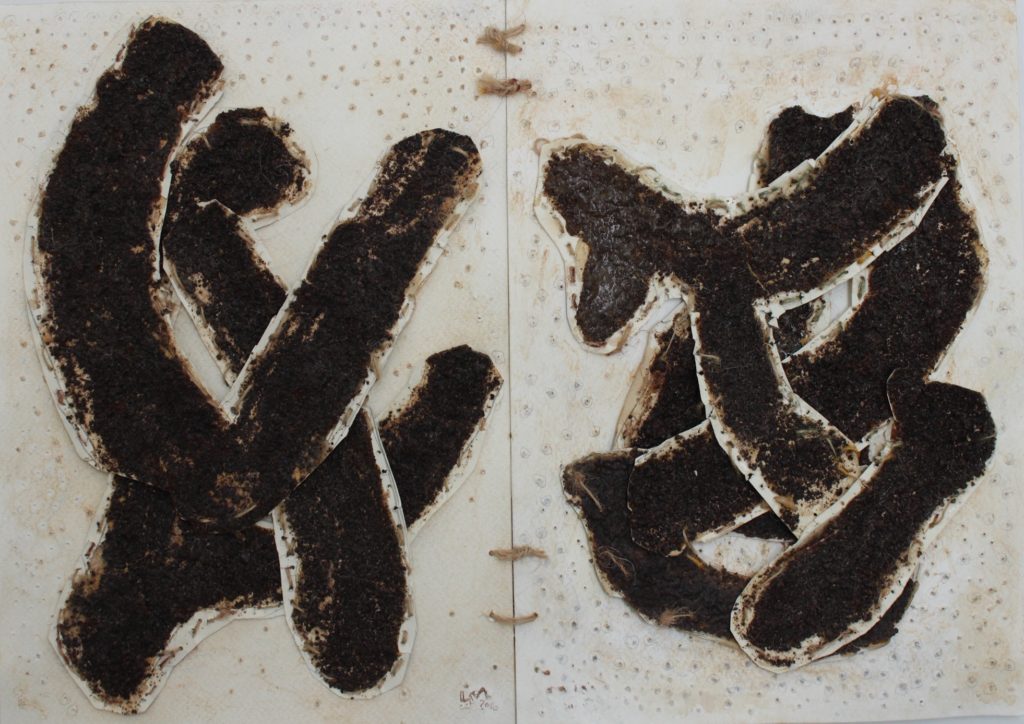
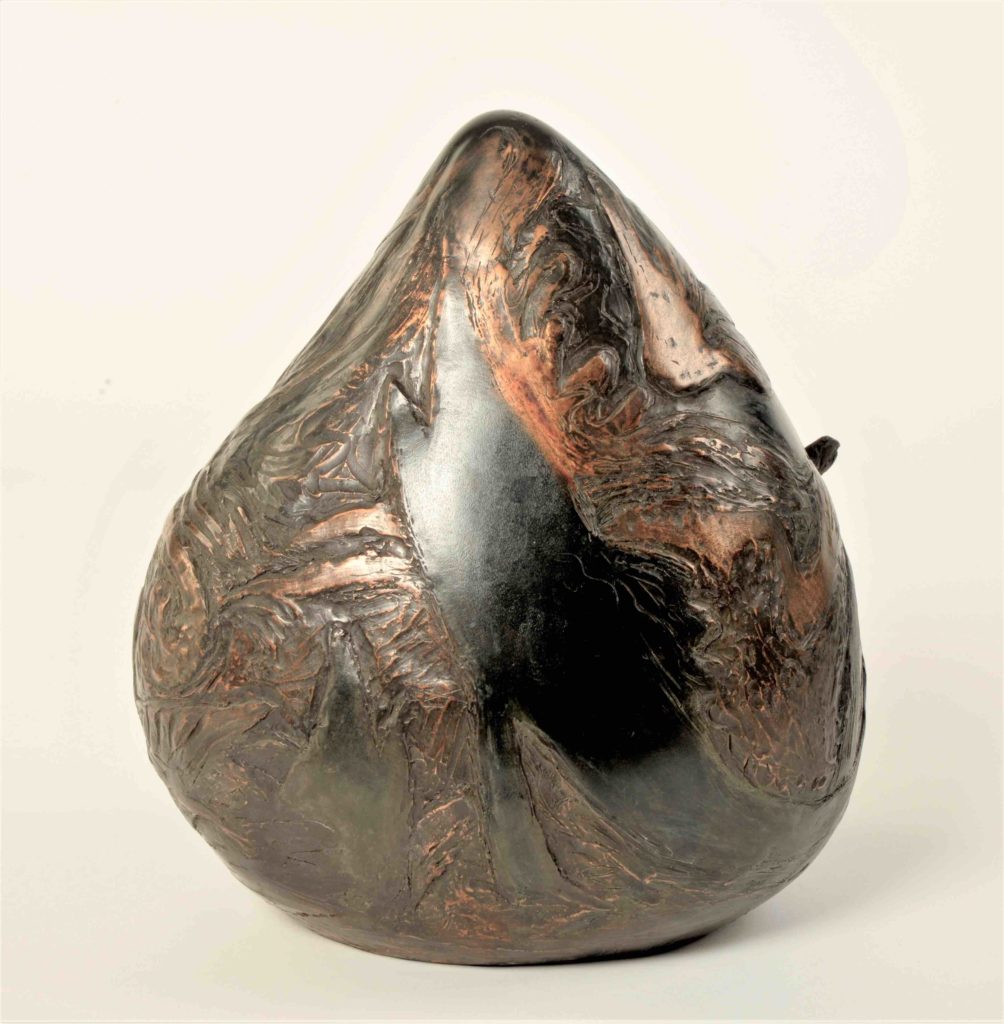
About the artists
Nana Shiomi
Nana Shiomi is a celebrated woodblock artist based in southeast London. As she writes on her website, “plate and print” are always opposite configurations. They reflect dualistic principles such as right and left, top and bottom, East and West, etc. So it is not a coincidence that she often composes her work into two opposing sides, using the “baren” to spread water-based ink and let it soak into the Japanese paper.
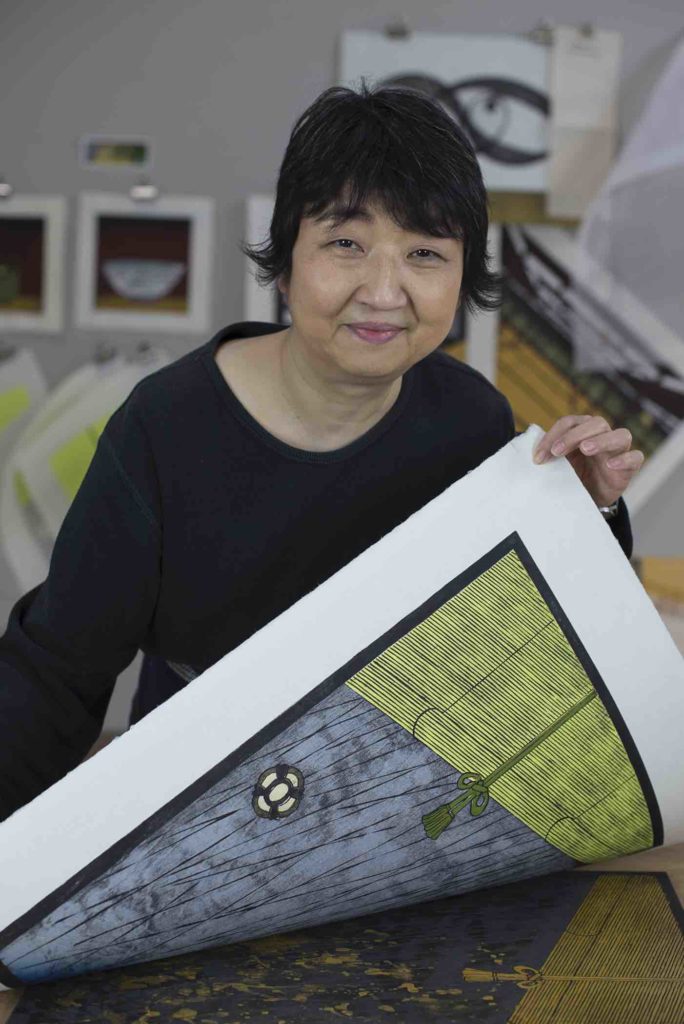
Purity of water in reflection
Japan and Britain are quite similar in size. But Japan is 73% mountainous, with many forests and rivers. So much of Japan is covered in water. That water is very natural and very pure. Japanese culture is big on tea ceremonies and cooking. However, if we have dirty water we can’t drink the tea or eat the raw fish. The Japanese paper I use ….needs good water. Old Japanese, traditional culture needs pure water..…We’ve always had a lot of pure water. When I came to London, the running water was a bit different. British water is harder. Japanese water is soft. The taste is different, it tastes okay the British water, but something is different.
Nana Shiomi
Pure water is a often a subject or theme for Nana’s work. For one print (below), the beautiful Kinkakuji golden temple in Kyoto is reflected in a lake, the reflection indistinguishable from what it reflects. When water is so pure, which is the true reality?
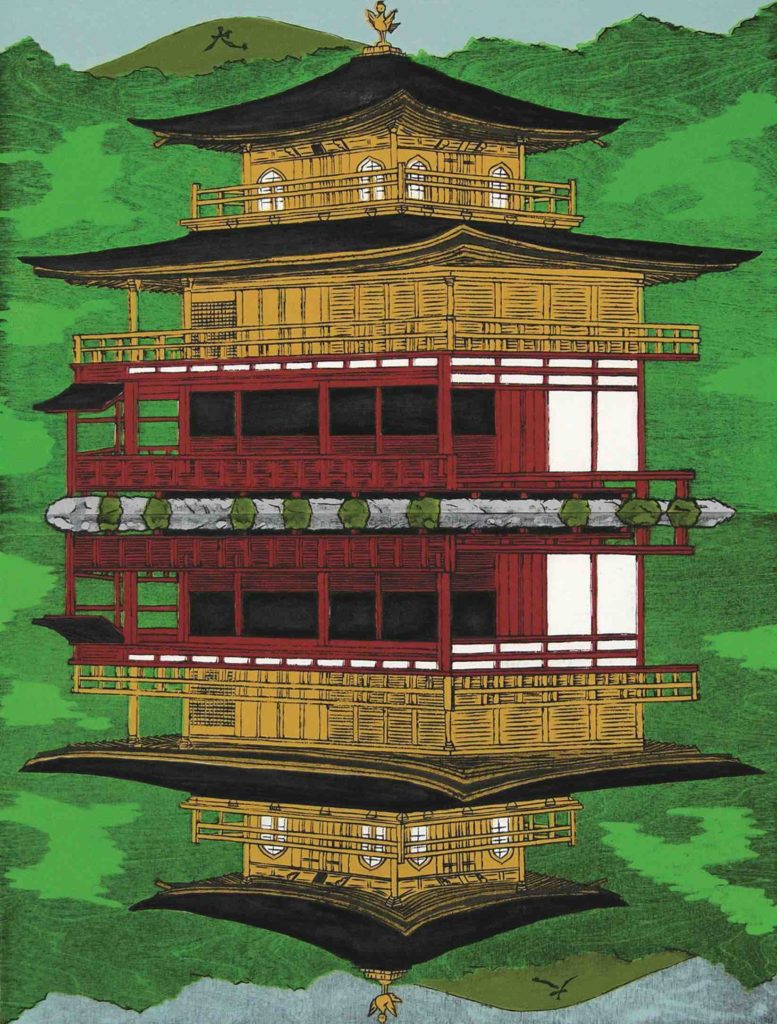
A pair of prints: ‘The Sound of the Waterfall: Thinker’ and ‘The Sound of the waterfall: Jumper’ features two carp. One carp floats deep in thought at the bottom of a waterfall, then its twin leaps up, perhaps aiming to turn into the legendary dragon which creates the clouds and rain. Shiomi invites us to have true ambition and leap like the carp.
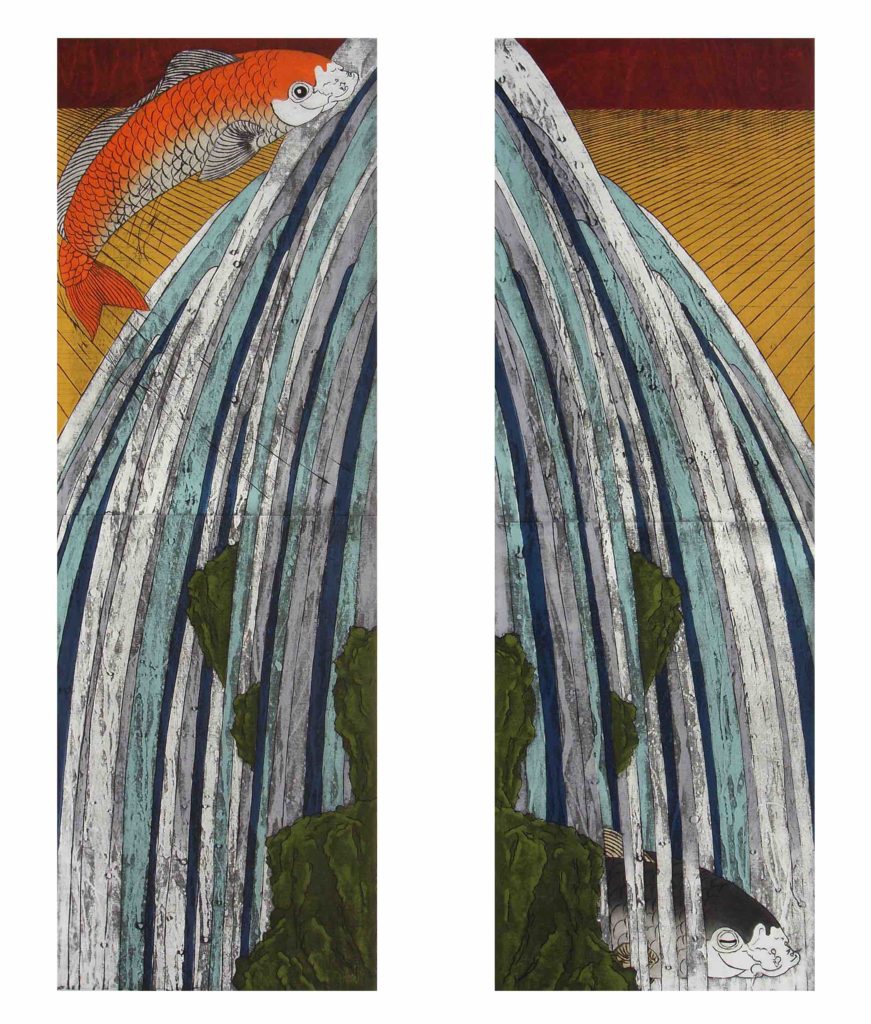
“So, I always wanted to say vice-versa. like, my life. I came to this country from the East, so it makes me more confident about my idea, you know, East and West. It’s both right, you know, it’s just the opposite or different. The sound of water for jumper and thinker. I always compare two things. And one Carp is jumping and so active. And the other one is thinking calmly. We need both sides jumping and then thinking.”
Nana Shiomi
Shape of god
Nana Shiomi’s is very much influenced by the great master of woodcut, Hokusai (Katsushika Hokusai, 1760-1849). In 1833-4 Hokusai made a series of 8 prints for ‘A Tour of the Waterfalls of the Provinces’. These were all sited on Honshu island and represent Japan’s most beautiful waterfalls. Hokusai was a follower of a kind of Buddhism which incorporated Shinto beliefs in animism. This means that he believed that gods inhabit nature, in the trees, plants, and these waterfalls. Nana has taken this idea for her images, Shape of God, but isolated just the ‘shape of water’ out of the historic prints, to make distinctive images of the water itself. Each one is therefore more clearly shown as a god of water.
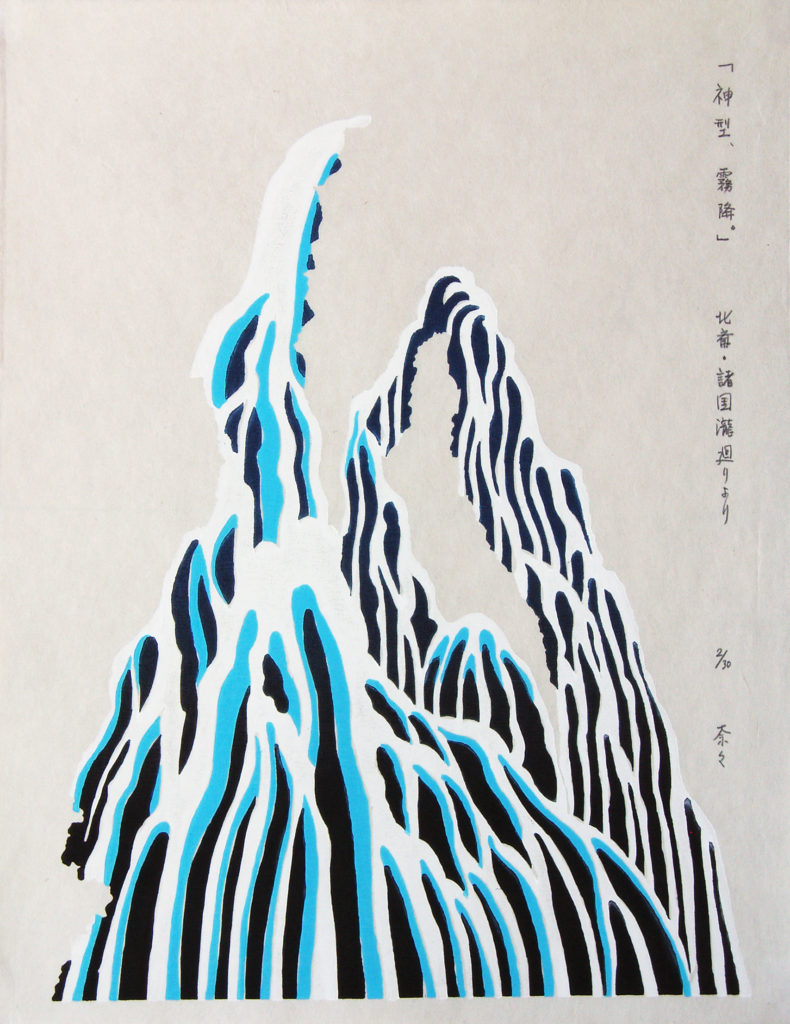
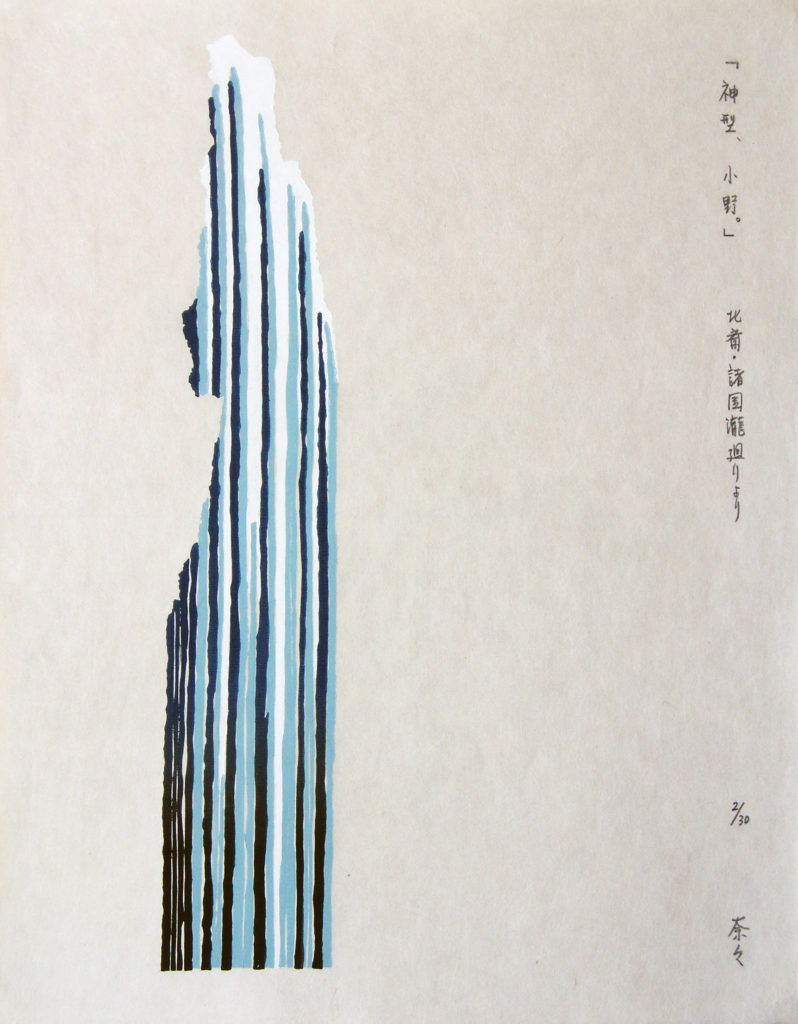
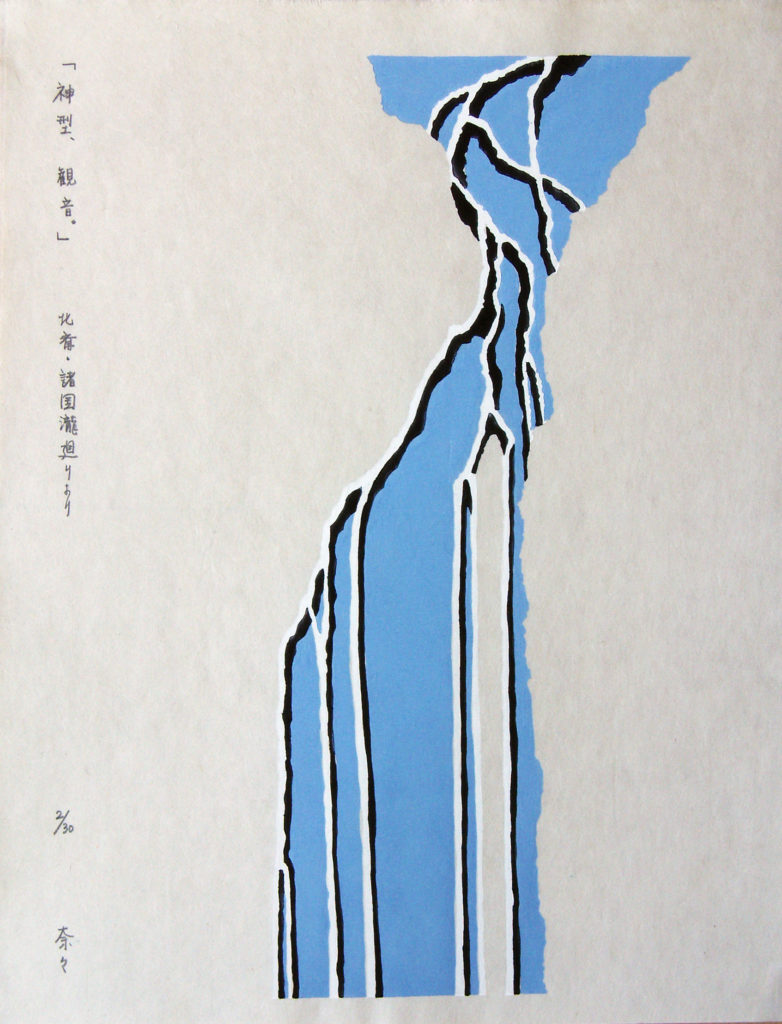
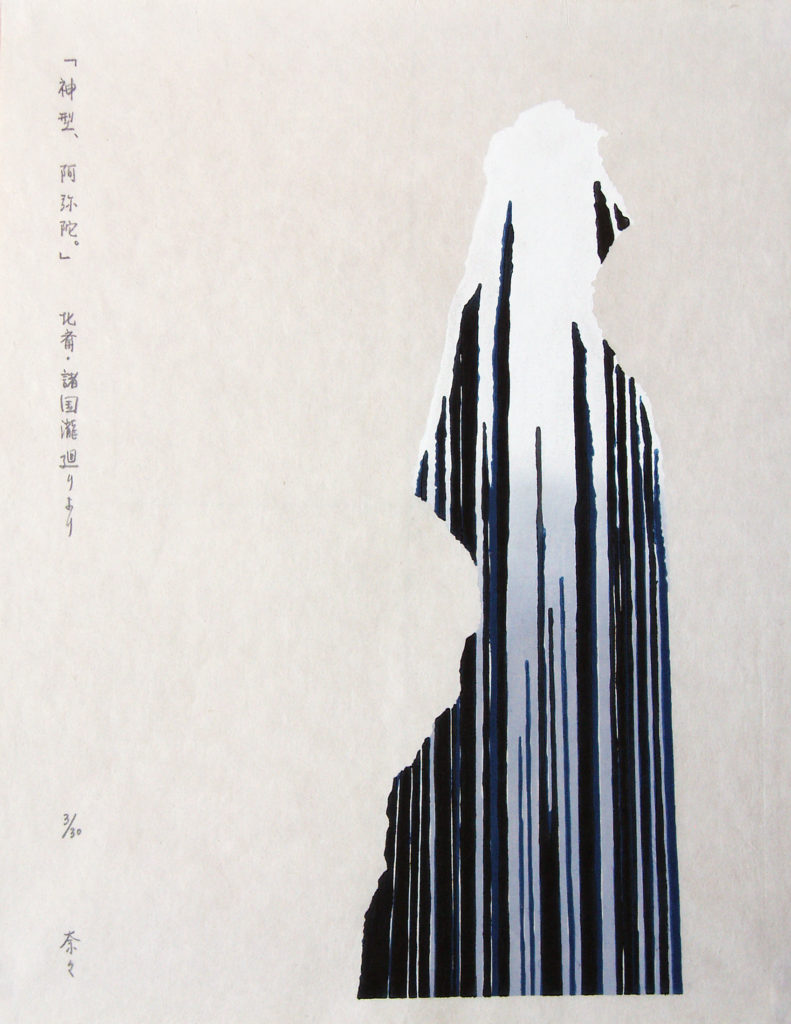
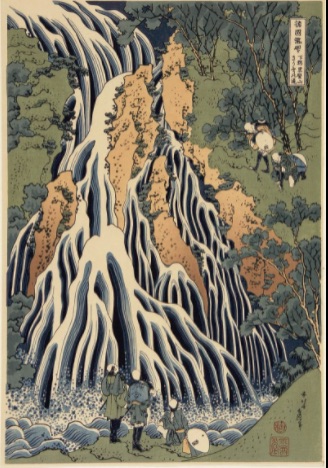
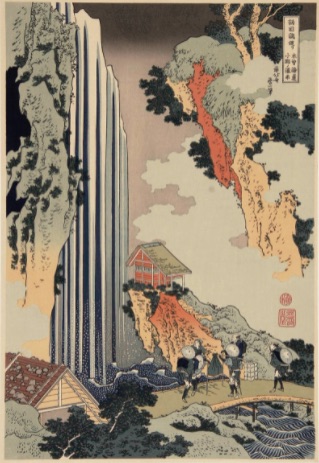
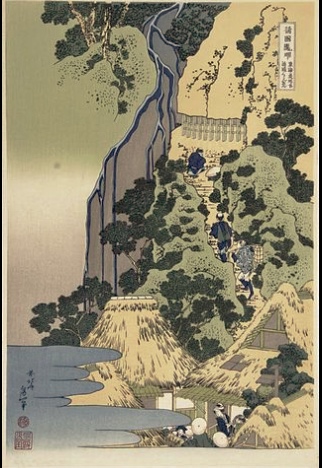
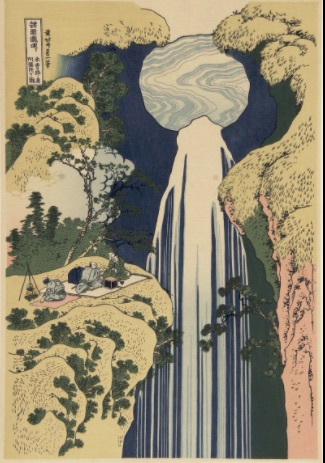
Hokusai waterfalls, left to right: Kirifuri, Ono, Kannon, Amida
Lisa Keiko Kirton
Lisa Keiko Kirton, like Isao Miura comes from an old rice farming family in Japan, For both artists, their paintings and sculpture often explore the ecosystem of the rice paddy.
Lisa Keiko Kirton studied photography and later went to Glassell School of Art, Museum of Fine Art in Texas. She moved to Scotland and then worked for many years in the Scottish Sculpture Workshop outside Aberdeen. There she produced abstract works in metal that represent family relationships and landmarks.
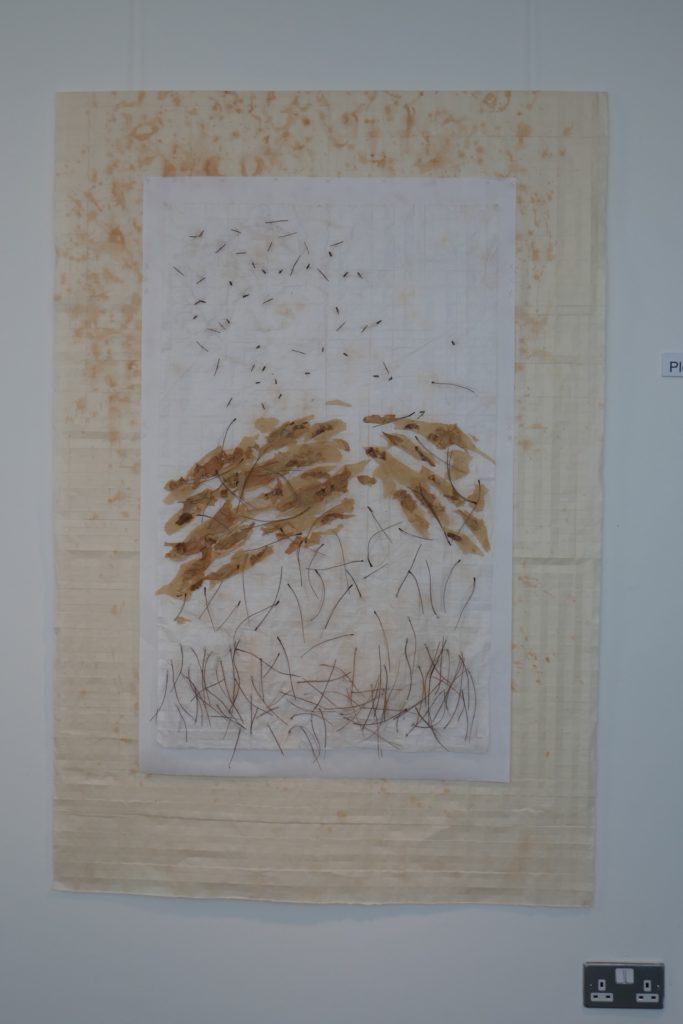
Since moving to London to a smaller domestic space, Lisa has continued to broaden her range of materials. They include pine needles, bread, coffee beans. She works now mainly on small cards and canvases, letting the abstract images flow through her fingers onto the surface, as if she was bending to bed the rice plants into the soil.
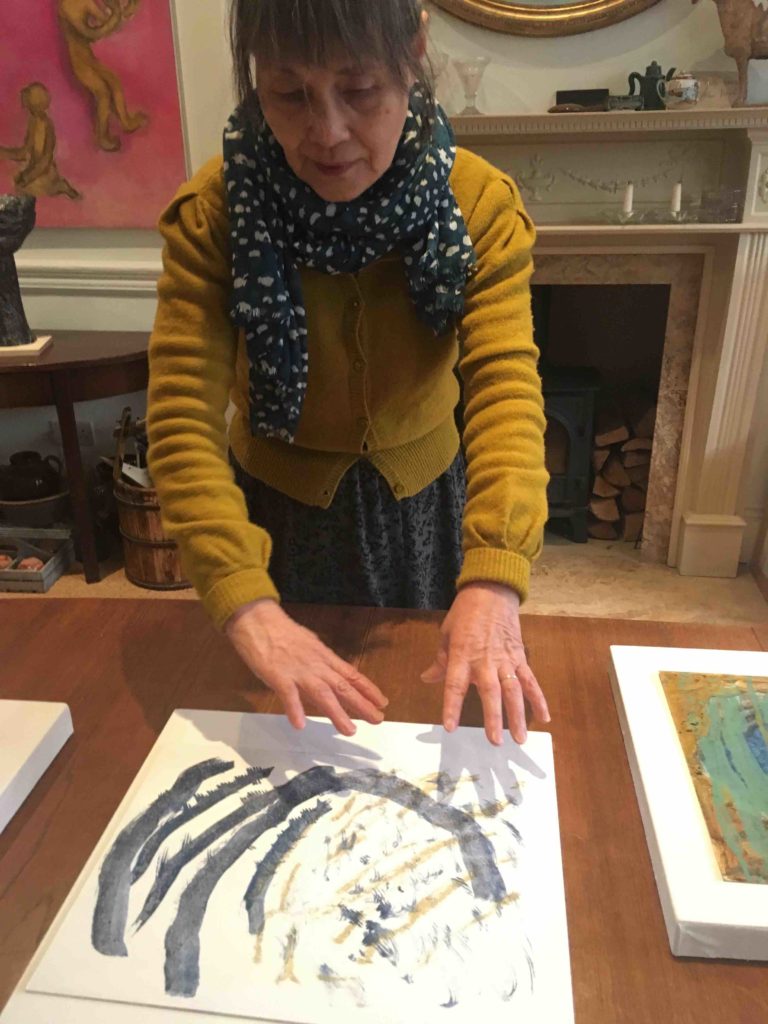
She uses paint, earth and salt, so the surfaces are sometimes spongy or sparkly. There is a suggestion of ancient Jomon marks, of calligraphic gestures, as if she is writing messages to the future. Inside the Japanese letter “TA”, is a simple quartered square meaning field or paddy. In 2019 Lisa exhibited in CAF Nebula, at Saitama Contemporary Museum of Art, Japan.

Her original inspiration came from her grandmother, whilst living in rural Japan, where she often had to improvise in response to the natural disasters which threatened them. For instance, building temporary shelters from typhoons, to protect their rice fields, using anything that came to hand.
Being close to nature
“I think being Japanese, we are always close to nature. Humanity is a part of nature, and that is the most important thing”
Lisa’s first water-inspired participatory exhibition was held in London, where she hung a large sheet of rice paper, then using dried straw she constructed the kanji character of “TA” (meaning rice field) to segment the paper. She then asked visitors, using their hands, to splash water on the paper. The result was folded neatly then torn into small pieces before finally being burnt.
The second major work relating to water was titled” Mizu”. Having exhibitions at SSA in Edinburgh and at a London Community Centre she asked visitors to draw or paint their images of “Water “on a postcard sized paper. These were then posted by sea mail to Japan because she wanted the postcards to “touch” the surface of the earth and ocean, on their journey to reach her hometown community centre where she had held a third “Water “related workshop. Her ancestors had been strongly involved in purchasing a reservoir which was a crucial lifeline for the local farmers’ rice fields. The reservoir eventually became redundant and was sold, which funded the establishment of the community centre in Hoshikuma, Fukuoka, to commemorate the efforts of their ancestors. The culmination of the three workshops was to bury the postcards in a secret location.
” I think we are all spiritual”
Isao Miura
Isao Miura, like Shiomi, trained at the Royal College of Art in London. He also studied at Chelsea College of Art, where the late Roger Ackling was a tutor.
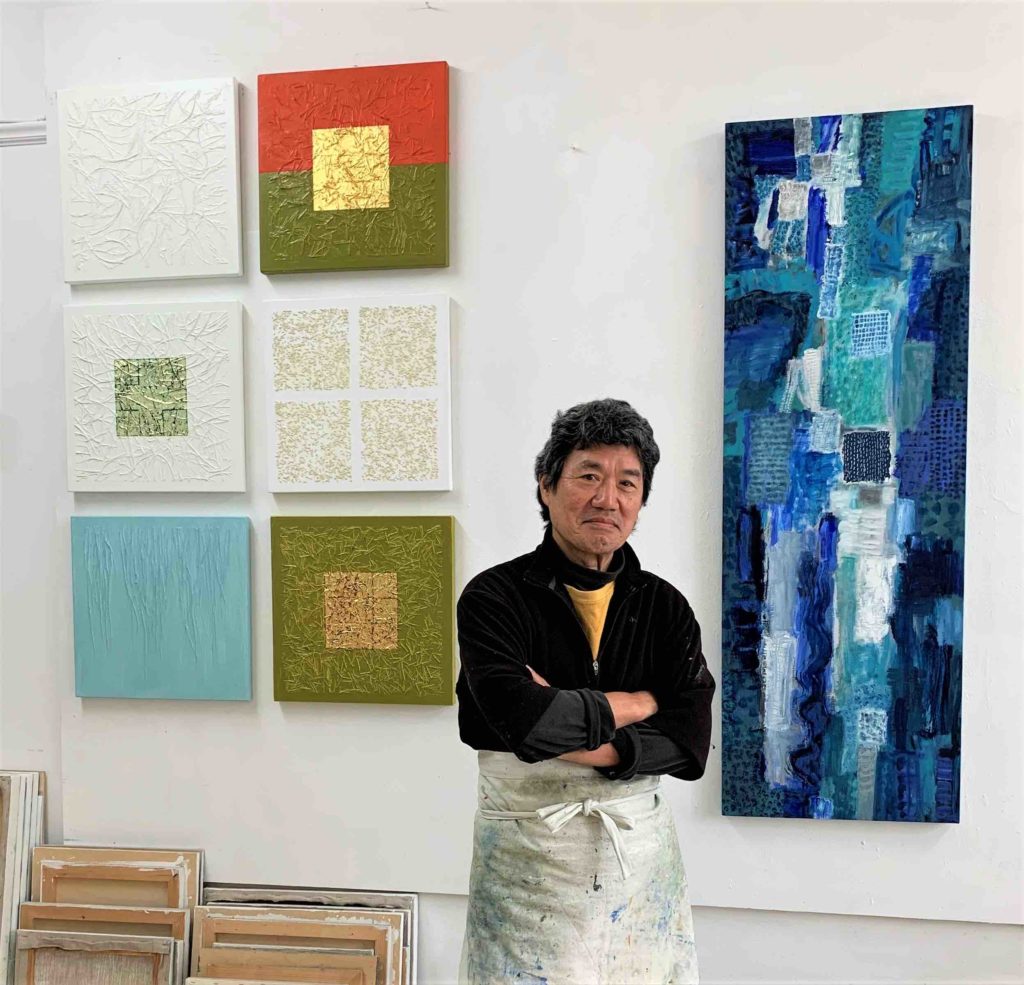
Isao’s work starts from his childhood experience in the paddy fields. His family farm was on the NW coast, not a Tsunami area, but facing waves of pollution from China and Taiwan, so subject to acid rain. The old farmhouse with its central fire pit has long gone and so have many of the farmers. Japan’s countryside has been depopulating since the 1950s, as machinery has replaced human labour. The yields from paddy fields, rice still being the staple diet, have been increasingly controlled with technology – with pesticides, herbicides, fungicides, fertilisers. Shorter strains of rice have been developed to be more wind-resistant in a changing climate. Isao’s point is that nature risks being forgotten in all of this. Nature is where his art begins, but this is not reflected literally. There needs to be a symbiosis of relationships between humans and animals in the natural world, a dynamic one, responsive to change, as we cannot control nature.
Explosive wax and oil paintings
Miura works in many media, from wood, paper and bronze to oils and wax. For this show, he has made a pair of explosive wax and oil paintings, exploring variations on the Japanese characters for wind and rain, earth and sky.
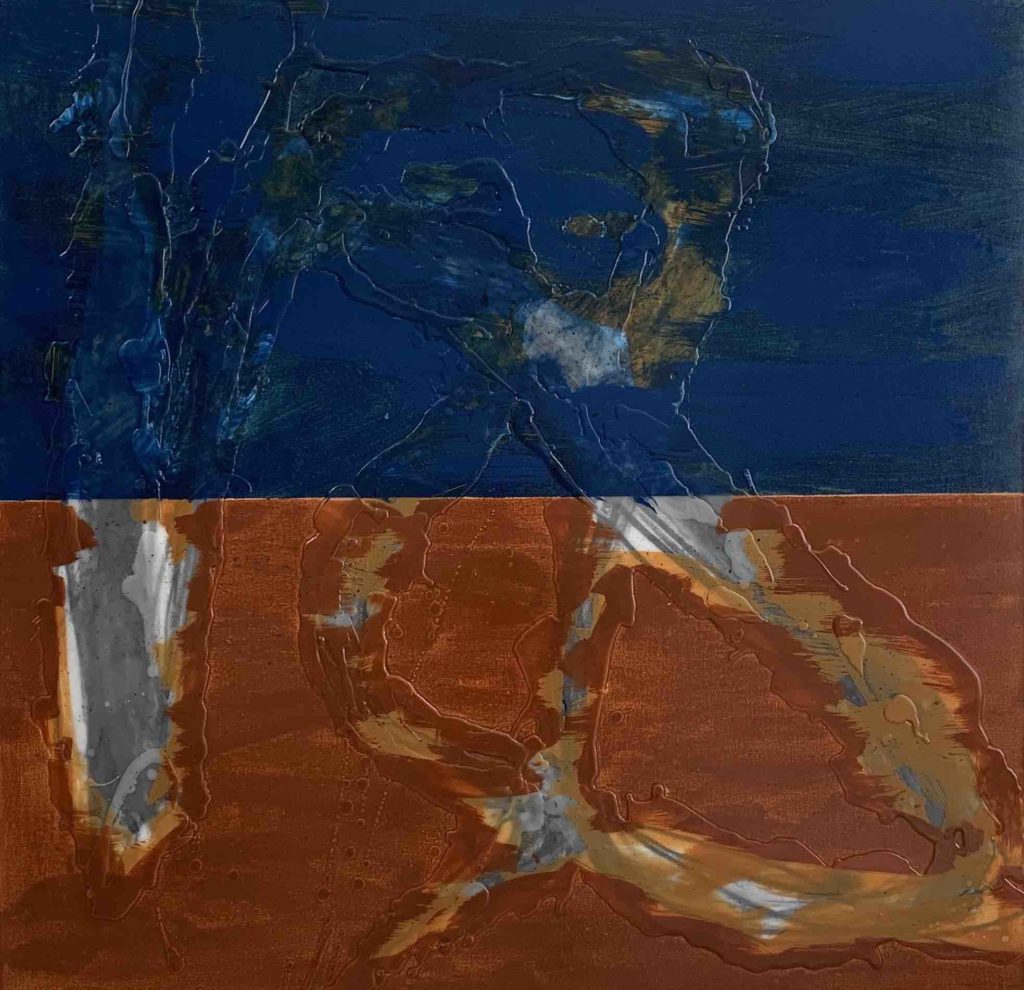
Rice grasses
He is also showing a series of smaller paintings using rice grasses, oil paint and gold leaf to conjure up the mixture of earth and sacred, that is invested in the paddy in Japan. Grasses form patterns set in the ground of the canvas, irrigated by the paint and illuminated by sparks of gold, like fireflies.
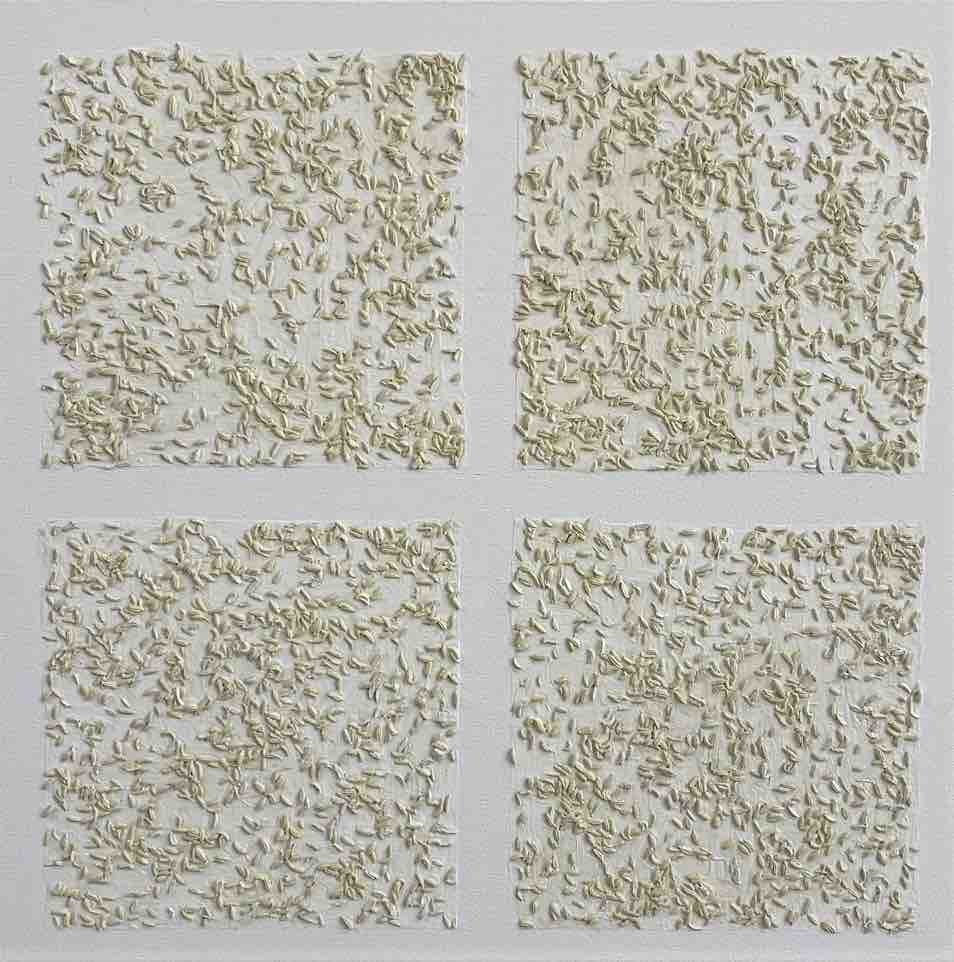
Poetic bronzes
In addition, we are showing two of Miura’s beautiful bronzes translating Matsuo Basho’s poems about water. Miura made these during his 2014/15 fellowship in the Bronze Foundry at Chelsea College of Art.
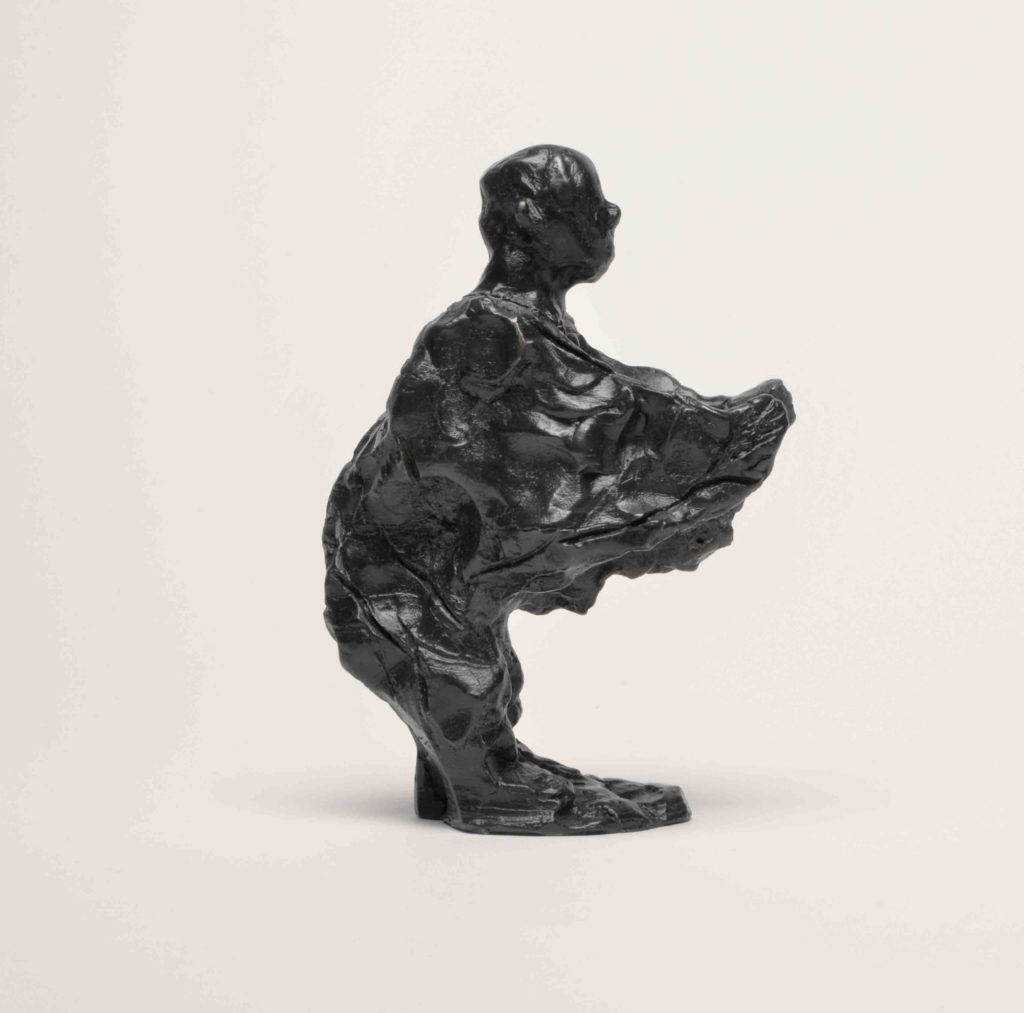
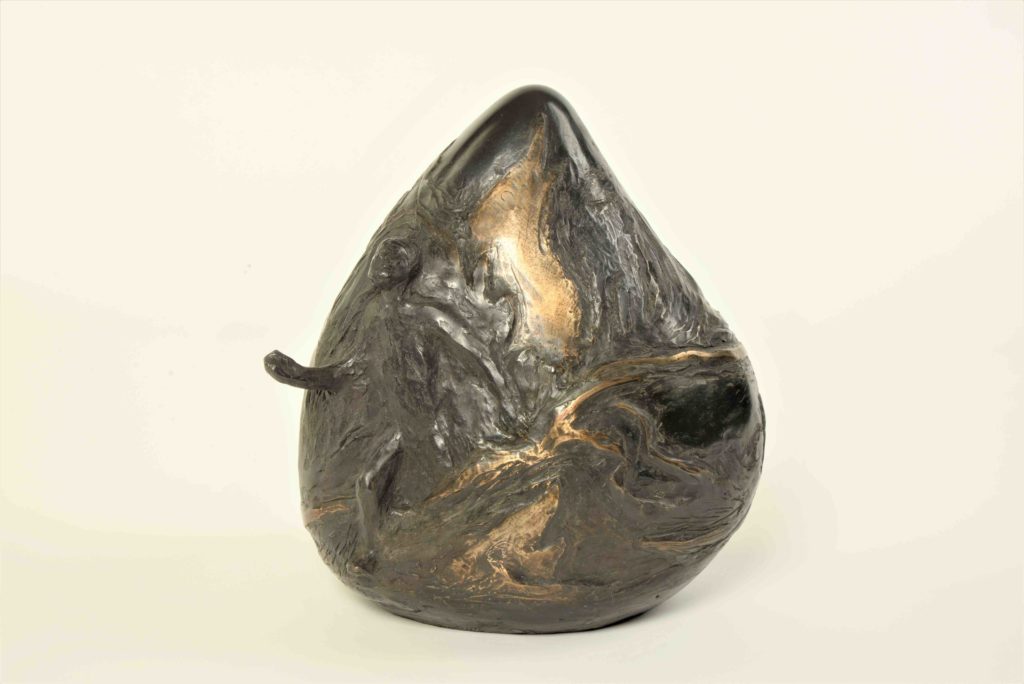
Jonathan Meuli
Jonathan Meuli originally studied art history in Cambridge, before becoming a painter in his own right. He did an MA at the University of East Anglia, followed by a research fellowship. He lives and works now in Glasgow, but maintains close links with East Anglia. For example he showed a selection of his landscape and abstract paintings at Wolfson College Cambridge in 2018.
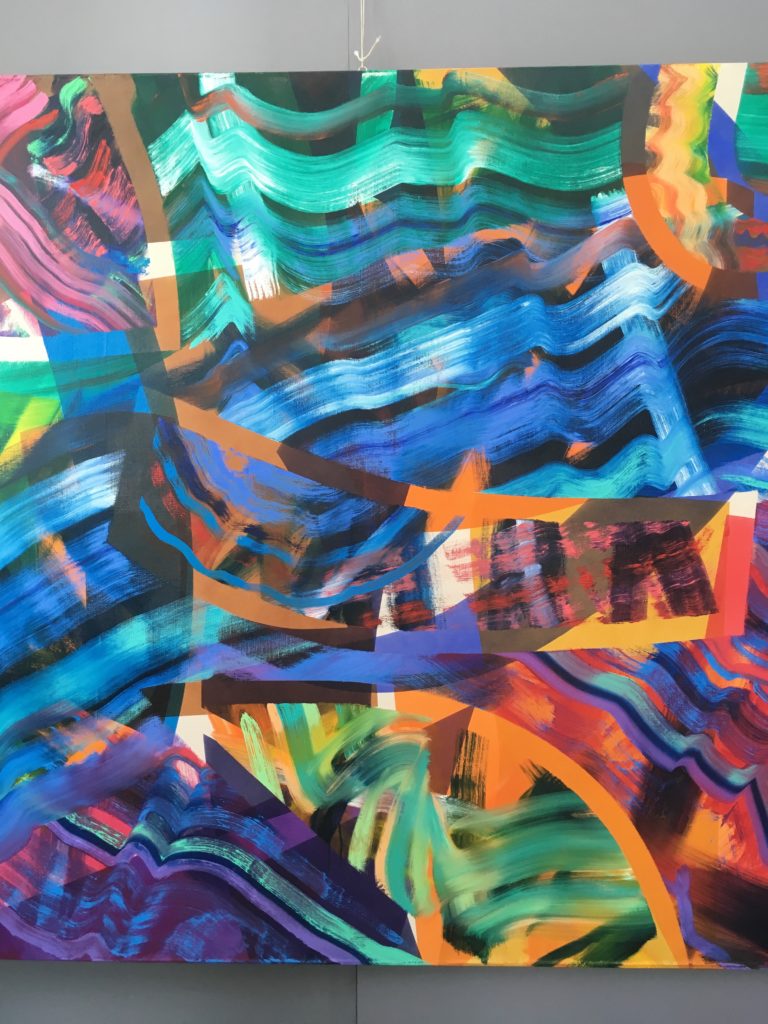
Wave paintings influenced by Hokusai
Since the devastating Japanese tsunami of 2011, Meuli has developed a powerful series of Wave paintings and River scrolls influenced by Hokusai but also by a fascination with colour and the science of wave theory.
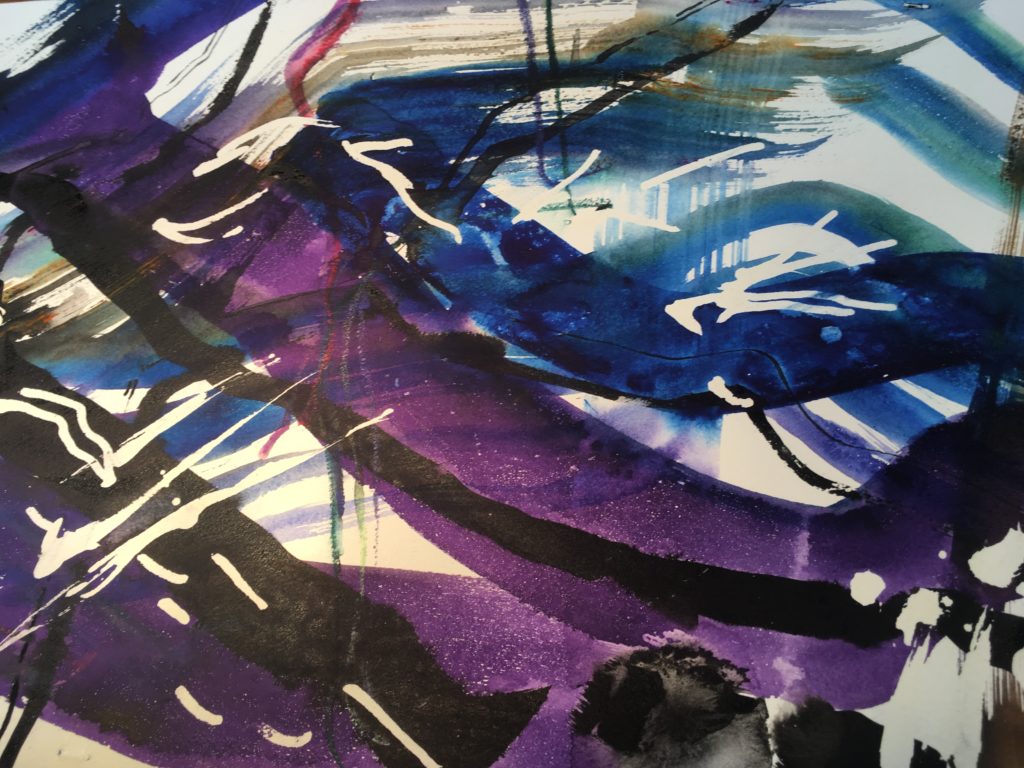
Like the water beneath a wave, the underlayers of these paintings are dense and still and carefully planned, while the surface layers erupt in rapid brushstrokes. He often paints while listening to music in order to help generate energy and rhythm, using colour and shape to suggest something of the gigantic forces at work in nature.
Hakan Topal
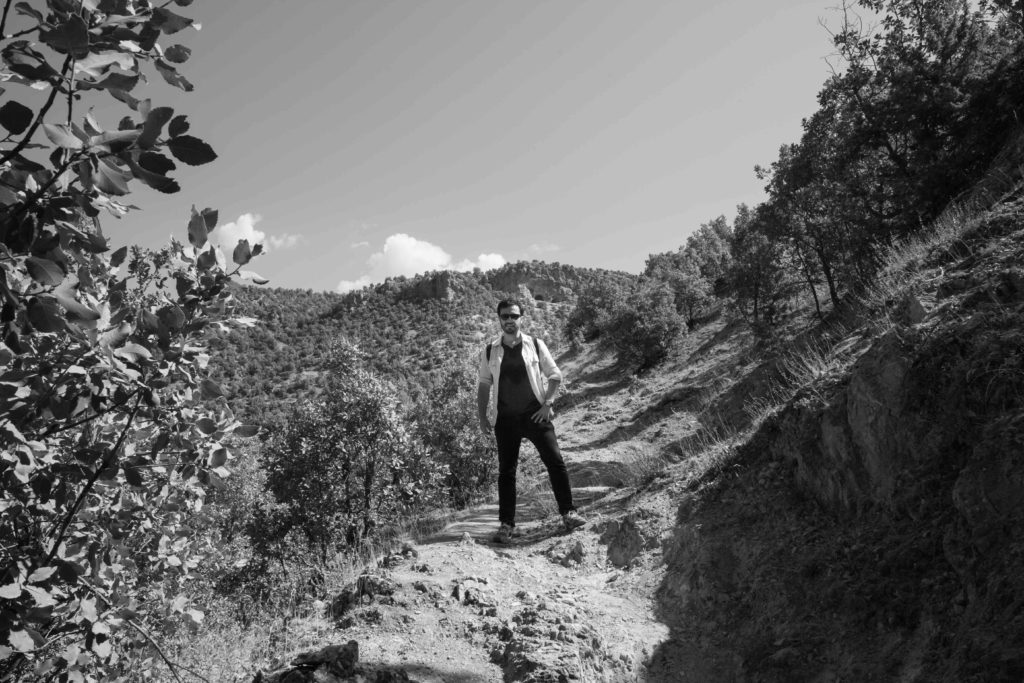
One other artist introduces a note of realism and urgency to the exhibition. Hakan Topal is a Turkish artist based in Brooklyn, New York, who completed two artist research residencies in Miyagi prefecture in Japan, during 2015/17. Of the five artists, he is the one most overtly responding to climate-change, both in his motivation and in the treatment of his subject matter .
His training began as an engineer and his cultural education began with a Gender and Women’s Studies major at Middle East Technical University in Ankara and a doctorate in Sociology and Arts at New School for Social Research in New York. As co-founder of xurban_collective 2000-2012, his political activism took him to show high-profile works and projects widely around the world. Currently he is Associate Professor of New Media, Art and Design at Purchase College New York. Hakan sees his role as an artist to bring a multi-layered perspective to the ‘social issues and urgent political matter’ he studies and reveals. Photography and video become both his research and his presentation tools. They form the beginnings of conversations with the viewer – not directive as in a documentary sense, but documentary in a research sense. Hakan is consistently interested in the effects of catastrophes, and the neo-liberal destruction and reparations which result.
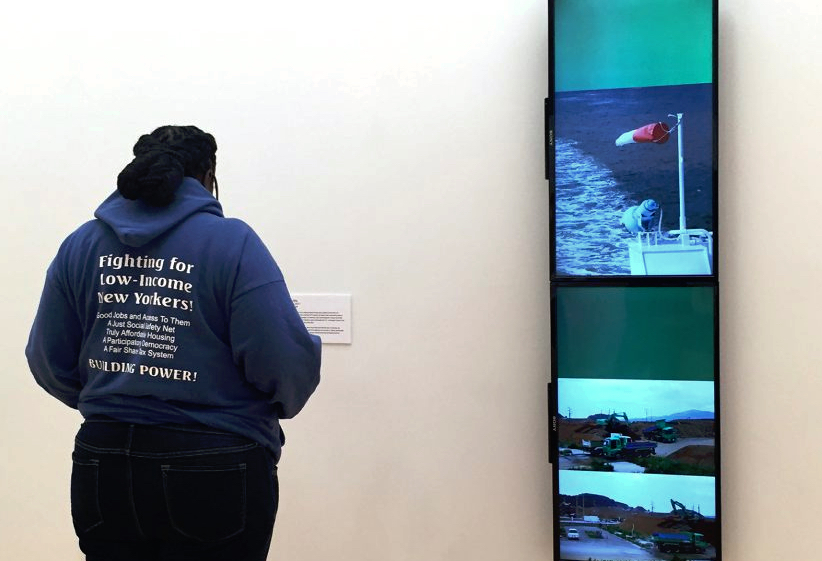
Tsunami
While traveling through coastal communities devastated by the 2011 tsunami, he recorded videos and made photographs, exhibiting some of the outcomes in exhibitions in Tokyo and Yonkers. Topal’s project contemplates ideas of speculation, redevelopment, healing in the aftermath of catastrophe.
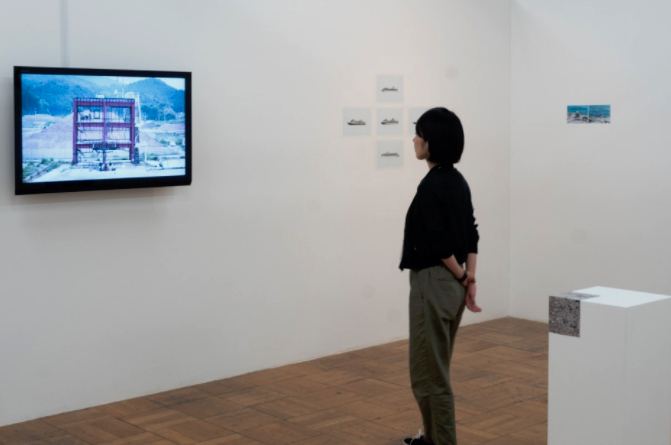
His videos and conceptual photographs of the remains of buildings invite the viewer to reconsider our built environment as it intersects the natural. For this exhibition at GroundWork, Topal has revisited the content of this project, re-edited the videos and prepared a grid of photographs, with accompanying text along the wall. The videos have ambient sound designed to complement the images in this specific gallery space.
Shizuka Tatsuno
Shizuka Tatsuno is a young designer who trained in England at Kingston University, London and now operates from Tokyo. She designs jewellery, accessories and products for the household. Her aim is to add sustainability to well-made things. She works with local makers to refine designs and promote them more widely, passing on their authentic stories.
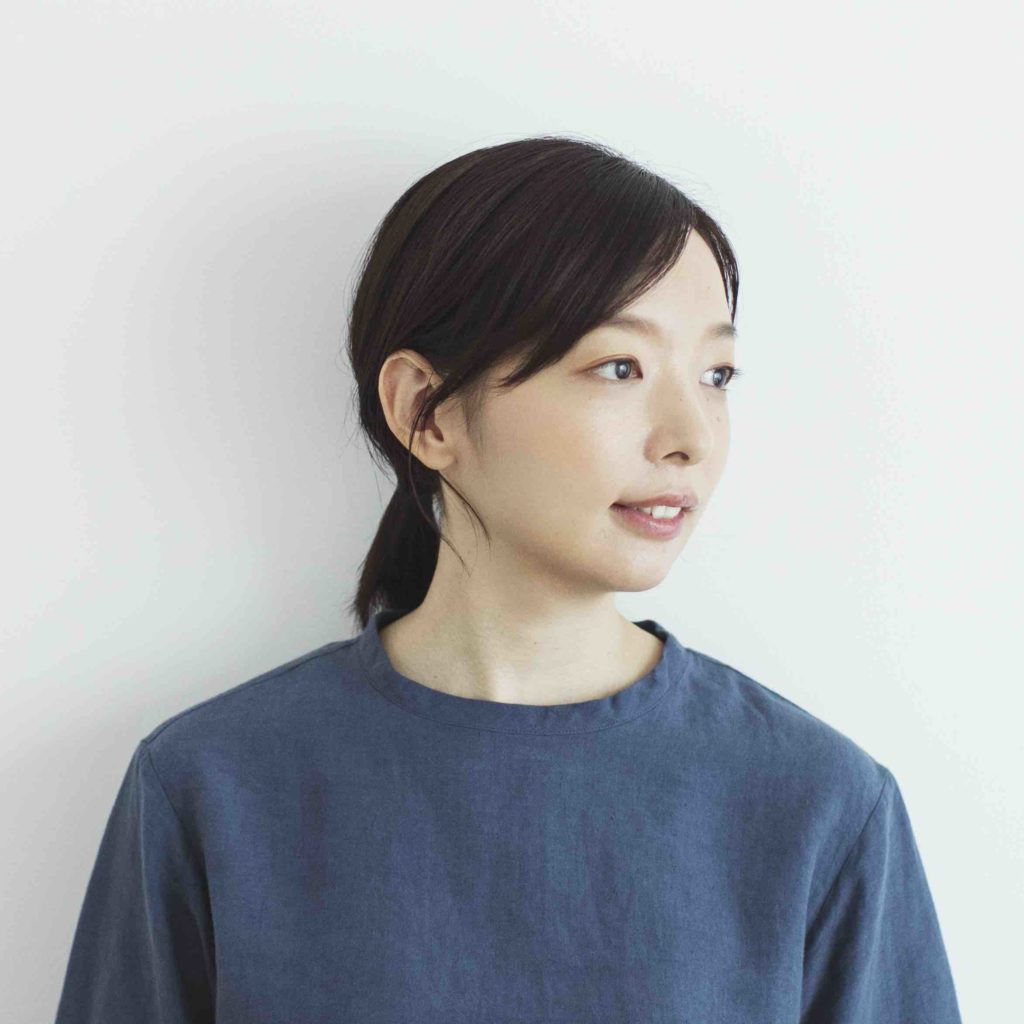
The hiiro water carafe
These water carafes are a re-working of a traditional product. A slow-made craft, made in a sustainable way. Shizuka gave the carafes a modern clean-cut shape and requested additional ingredients to be mixed with the clay to give slightly more rustic texture. Otherwise they are made in the traditional way, unglazed, with only rice straw fired in the clay for decoration. She also designed special customised packaging.
“The characteristic of Bizen-yaki (Bizen ware) made in Bizen, Okayama is that it is fired unglazed without any painting. I was impressed by its functionality that it already has: It can make the water taste mild when stored in it for 24 hours. So I designed a water carafe. I added organic feel to the product by adding small detail like its scratched-like texture created by mixing gravel with the clay.
Shizuka Tatsuno
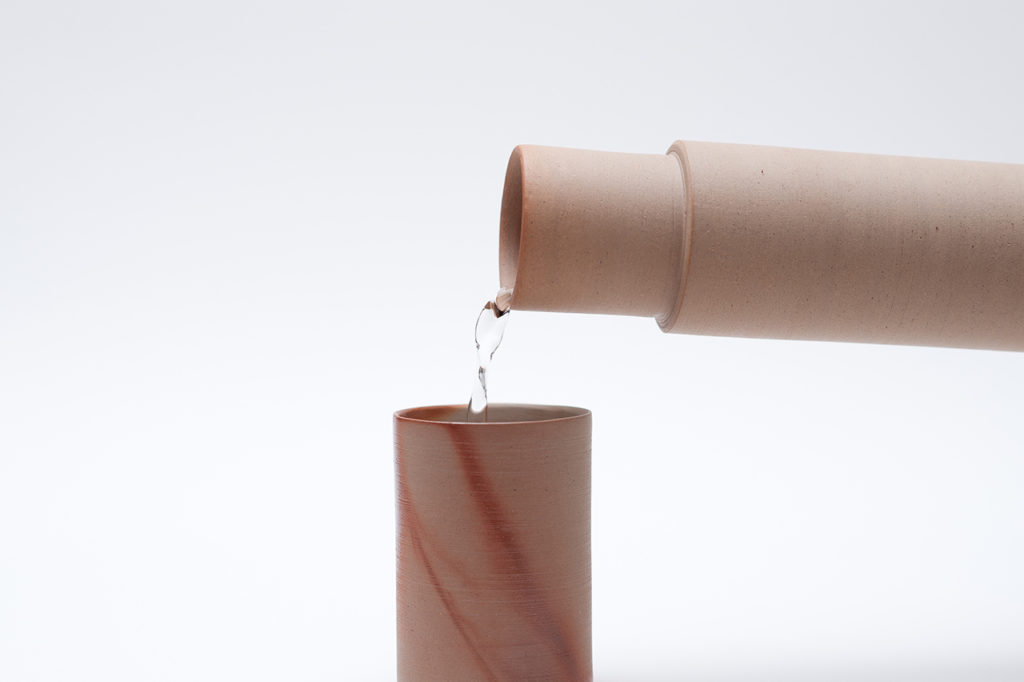
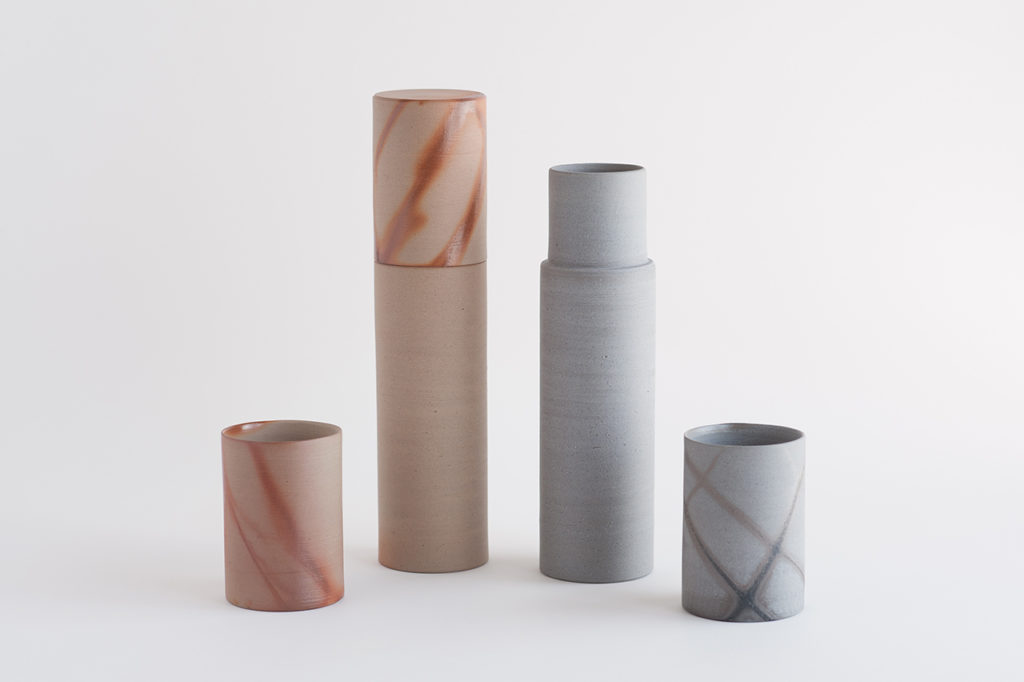
Unglazed Bizen-Ware ceramic
Made by Daikura pottery
Bizen-ware has special water-keeping qualities.
Water kept in Bizen-Ware containers is said to become sweeter and sweeter over time. The more they are used, the better it gets. These carafes are made to order in the traditional way by Daikura pottery.
Bizen-Ware is one of the five great classic Japanese pottery styles. It has been made in Bizen, Okayama, for over a thousand years. Locally it is described as a pottery made with just clay and fire in a tradition passed through generations.
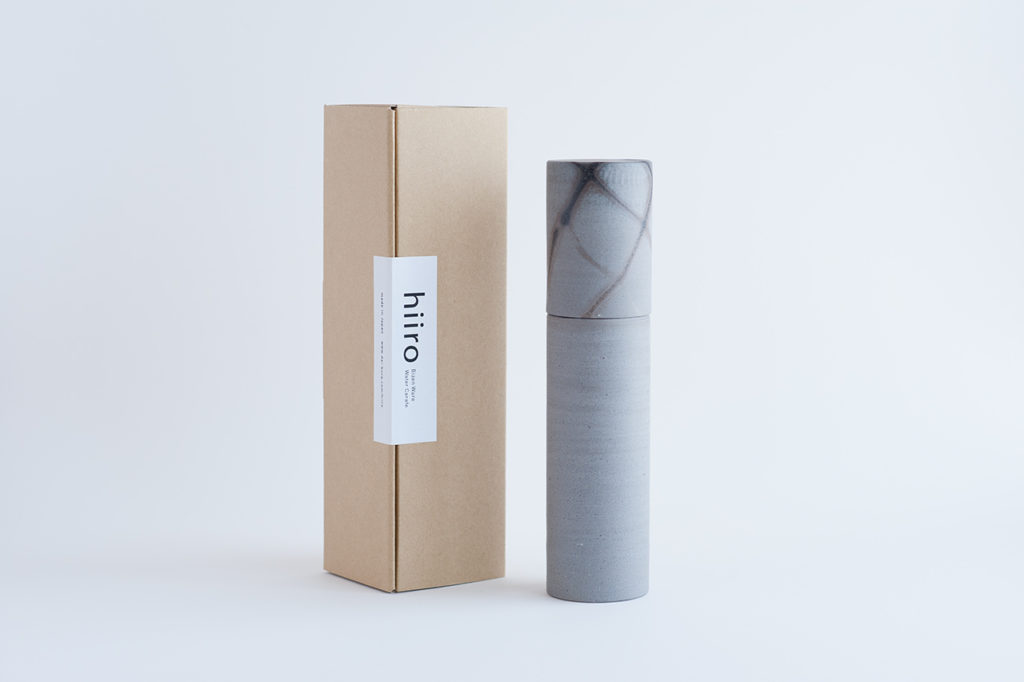
Reflecting on The Purity of Water
This exhibition has caused us all to think through the subject of the purity of water. For the Japanese artists in particular it has become clear how water has formed an absolute foundation of their culture.
In reflecting on the subject with them, it brings up sharply to us as a UK audience too, how we take for granted the runs of clear healthy water through our taps. But also we are reminded of our own water disasters, through the consequences of Storm Ciara and Storm Denis which began the year 2020, and the flooding rivers in Yorkshire and the devastation that has brought to homes.
We have not yet quite suffered the destructions experienced in Japan, but for us worse is to come.

Save and protect pure water
The reasons for the storms and the responses to them are intensely complex, however, we can start by learning from artists like these, what are our values, what we treasure and why we should fight to save and protect our own pure water without it engulfing us first.

